How to cite this page Comment citer cette page
Items
In item set
Monuments
-
 Statue of Arthur Conan Doyle
Statue of Arthur Conan Doyle -
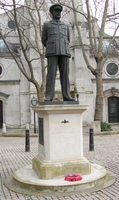 Statue of Arthur Harris
Statue of Arthur Harris -
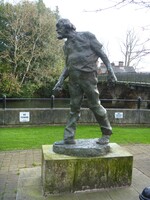 Statue of Augustus John
Statue of Augustus John -
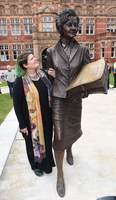 Statue of Barbara Castle
Statue of Barbara Castle -
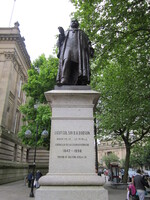 Statue of Benjamin Alfred Dobson
Statue of Benjamin Alfred Dobson -
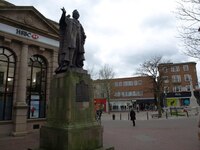 Statue of Benjamin Disraeli, Aylesbury
Statue of Benjamin Disraeli, Aylesbury -
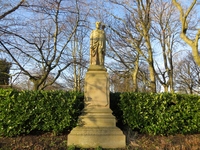 Statue of Benjamin Disraeli, Bolton
Statue of Benjamin Disraeli, Bolton -
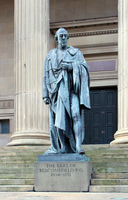 Statue of Benjamin Disraeli, Liverpool
Statue of Benjamin Disraeli, Liverpool -
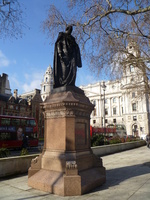 Statue of Benjamin Disraeli, Parliament Square
Statue of Benjamin Disraeli, Parliament Square -
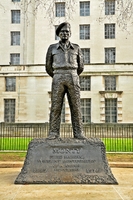 Statue of Bernard Montgomery
Statue of Bernard Montgomery -
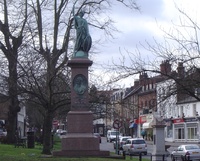 Statue of Britannia, Esher
Statue of Britannia, Esher - Statue of Britannia, South Shields
-
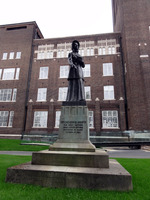 Statue of Catherine Booth, London
Statue of Catherine Booth, London -
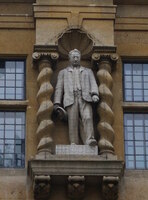 Statue of Cecil Rhodes, Oriel College, Oxford
Statue of Cecil Rhodes, Oriel College, Oxford -
 Statue of Charles Cavendish
Statue of Charles Cavendish -
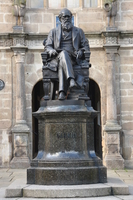 Statue of Charles Darwin, Shrewsbury
Statue of Charles Darwin, Shrewsbury -
Statue of Charles de Gaulle, Metz Charles de Gaulle is shown in motion, palms and eyes facing forward.
-
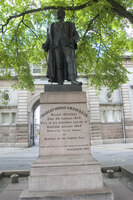 Statue of Charles Gordon, Aberdeen
Statue of Charles Gordon, Aberdeen -
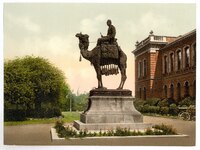 Statue of Charles Gordon, Brompton Barracks
Statue of Charles Gordon, Brompton Barracks -
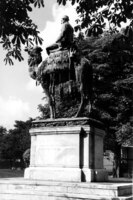 Statue of Charles Gordon, Gordon's School The statue of Gordon was repatriated from Khartoum, Sudan after independence and was reinstalled in its present position at Gordon's School in 1959.
Statue of Charles Gordon, Gordon's School The statue of Gordon was repatriated from Khartoum, Sudan after independence and was reinstalled in its present position at Gordon's School in 1959. -
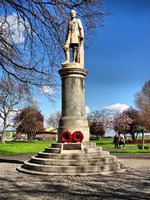 Statue of Charles Gordon, Gravesend
Statue of Charles Gordon, Gravesend -
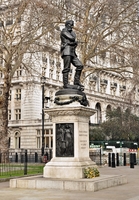 Statue of Charles Gordon, Westminster
Statue of Charles Gordon, Westminster -
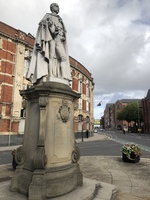 Statue of Charles Henry Wilson, Hull
Statue of Charles Henry Wilson, Hull -
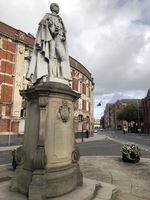 Statue of Charles Henry Wilson, Warter
Statue of Charles Henry Wilson, Warter -
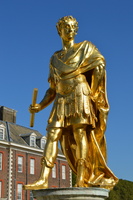 Statue of Charles II, Chelsea
Statue of Charles II, Chelsea -
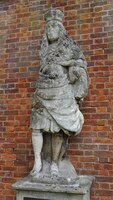 Statue of Charles II, Gloucester
Statue of Charles II, Gloucester -
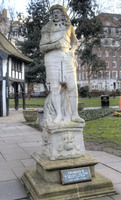 Statue of Charles II, Soho
Statue of Charles II, Soho -
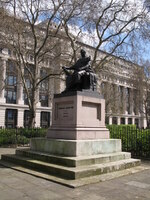 Statue of Charles James Fox, Bloomsbury Square
Statue of Charles James Fox, Bloomsbury Square -
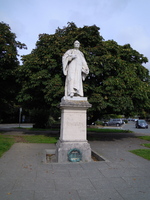 Statue of Charles Kingsley
Statue of Charles Kingsley -
 Statue of Charles Leclerc, Pontoise
Statue of Charles Leclerc, Pontoise -
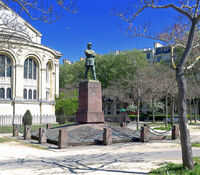 Statue of Charles Mangin, Paris
Statue of Charles Mangin, Paris -
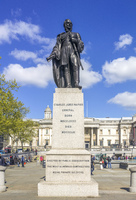 Statue of Charles Napier, Trafalgar Square
Statue of Charles Napier, Trafalgar Square -
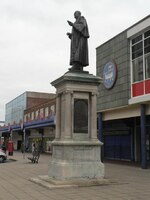 Statue of Charles Palmer
Statue of Charles Palmer -
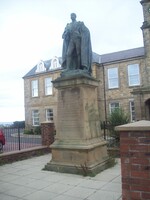 Statue of Charles Vane-Tempest-Stewart
Statue of Charles Vane-Tempest-Stewart -
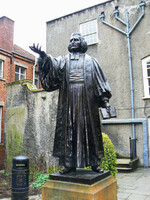 Statue of Charles Wesley, Bristol
Statue of Charles Wesley, Bristol -
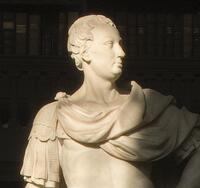 Statue of Christopher Codrington
Statue of Christopher Codrington -
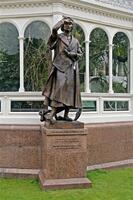 Statue of Christopher Columbus, Liverpool
Statue of Christopher Columbus, Liverpool -
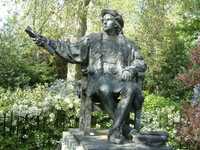 Statue of Christopher Columbus, London
Statue of Christopher Columbus, London -
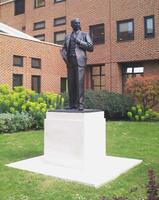 Statue of Clement Attlee
Statue of Clement Attlee -
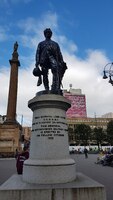 Statue of Colin Campbell, Glasgow
Statue of Colin Campbell, Glasgow -
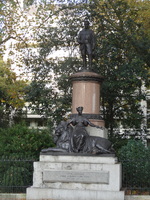 Statue of Colin Campbell, Westminster
Statue of Colin Campbell, Westminster -
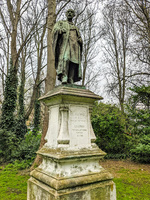 Statue of Corbet Woodhall
Statue of Corbet Woodhall -
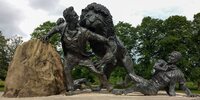 Statue of David Livingstone, Blantyre
Statue of David Livingstone, Blantyre -
 Statue of David Livingstone, Edinburgh
Statue of David Livingstone, Edinburgh -
 Statue of David Livingstone, Glasgow Livingstone is shown holding a bible in his left hand and his hat in his right hand. By his left foot lies a sextant, an astrolabe and an ankle shackle.
Statue of David Livingstone, Glasgow Livingstone is shown holding a bible in his left hand and his hat in his right hand. By his left foot lies a sextant, an astrolabe and an ankle shackle. -
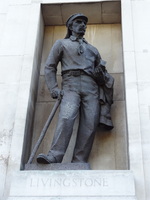 Statue of David Livingstone, Royal Geographical Society
Statue of David Livingstone, Royal Geographical Society -
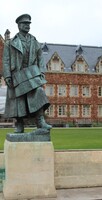 Statue of Douglas Haig, Clifton College
Statue of Douglas Haig, Clifton College -
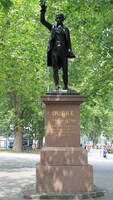 Statue of Edmund Burke
Statue of Edmund Burke -
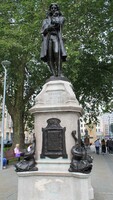 Statue of Edward Colston The almost hunched, contemplative figure represents Colston in his maturity. For a likeness, the sculptor may have turned to Jonathan Richardson’s portrait of 1702, a version of which hangs in the Council House. The reclining figure by Rysbrack on Colston’s tomb in All Saints, Corn Street, may also have been useful. The monument shows a younger, more vigorous man, although Rysbrack may well have used the same source. Cassidy’s statue depicts Colston in early eighteenth century clothes […] Three of the side reliefs show apocryphal or symbolic scenes from Colston’s life. One shows Colston distributing alms in the street; another depicts mythical seahorses and tritons pulling an anchor; the third depicts the legend […] of a dolphin plugging a leak in one of Colston’s ships. […] It was this ‘incident’ that is said to have caused Colston to adopt the dolphin as his emblem. Stylised dolphins, with writhing tails and looking more like animated catfish, are at each corner of the pedestal. The fourth panel bears an inscription and the sculptor’s name. (Merritt & Greenacre 2011: 41)
Statue of Edward Colston The almost hunched, contemplative figure represents Colston in his maturity. For a likeness, the sculptor may have turned to Jonathan Richardson’s portrait of 1702, a version of which hangs in the Council House. The reclining figure by Rysbrack on Colston’s tomb in All Saints, Corn Street, may also have been useful. The monument shows a younger, more vigorous man, although Rysbrack may well have used the same source. Cassidy’s statue depicts Colston in early eighteenth century clothes […] Three of the side reliefs show apocryphal or symbolic scenes from Colston’s life. One shows Colston distributing alms in the street; another depicts mythical seahorses and tritons pulling an anchor; the third depicts the legend […] of a dolphin plugging a leak in one of Colston’s ships. […] It was this ‘incident’ that is said to have caused Colston to adopt the dolphin as his emblem. Stylised dolphins, with writhing tails and looking more like animated catfish, are at each corner of the pedestal. The fourth panel bears an inscription and the sculptor’s name. (Merritt & Greenacre 2011: 41) -
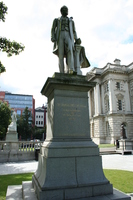 Statue of Edward Harland
Statue of Edward Harland